 |
 |
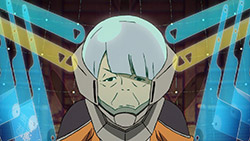 |
 |
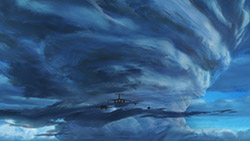 |
 |
 |
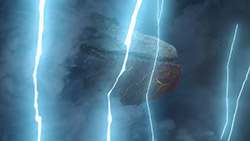 |
 |
 |
 |
 |
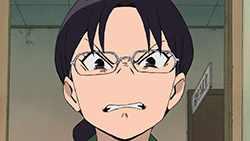 |
 |
 |
 |
 |
 |
 |
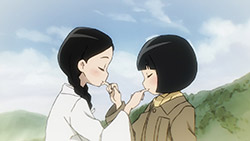 |
 |
 |
 |
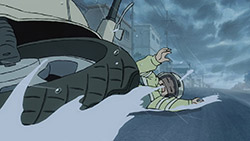 |
 |
 |
 |
 |
 |
 |
 |
 |
 |
 |
 |
 |
「モンパルナスの空とクズ女」 (Monparunasu no Sora to Kuzu On’na)
“The Sky of Montparnasse and the Trash Girl”
It is difficult to overstate the impact of Miyazaki Hayao on all Japanese popular media that came after him. Just like Tolkien put together a mythology that shall form the baseline of the entire western fantasy tradition, Miyazaki became the canon for anime, and from there infiltrated the Japanese zeitgeist. Castle in the Sky Laputa, in particular, inspired the imaginations of an entire generation of Japanese creators, and they took that spark with them to every industry. And between Miyazaki and Final Fantasy Japan suddenly found itself with airships and flying cities everywhere. Of course, it’s not so easy to distinguish what is a deliberate homage, a subconscious influence, or a complete coincidence from our vantage point in the audience, but sometimes there’s a scene in an anime that is so reminiscent that it must be some kind of reference or else all action is coincidence, the stars burn randomly, and life has no meaning. That is, if you tell me that this week’s Hisone to Masotan is not blatantly Ghibli then I’m afraid we can’t be friends any more. Remember that scene in Laputa, when they have to fly through the storm that cloak the titular floating fortress? Yeah? Yeah? Don’t tell me it’s not exactly the same thing. If you’re still unconvinced, do you remember what they called that particular cloud formation in the film? They called it the ‘Dragon’s Nest’. Exactly. Quad erat demonstratum, ipso facto, carpe diem, Carthago delenda est.
All this means I thought that this episode was great; after all, Laputa is basically my favourite anything ever. Rather than gush nostalgic for the rest of this post, though, let me get in some criticism of HisoMaso. I’m going to be nitpicking a fair bit and I don’t want to clog up next week’s finale post so we better to cover it in episode 11. And even here there’s no time to address all my unanswered questions arising from episode so I’m just going to list a few without comment:
- Hisone physically could not pilot Masotan, why is quitting wrong? The only reason Hoshino didn’t have to quit was because of active sabotage of her budding romance. Why did she need to quit the SDF completely and not take a Nao-san role or something in maintenance or admin?
- Why do we specifically need four OTFs anyway?
- How is the giant OTF supposed to be a secret when it’s a giant meteorological event visible from space?
- Doesn’t the OTF actively try to digest the pilot when their hearts wander? Is yoghurt lady going to be fine just because Hisone is with her?
- Can we make up our minds about how much love the OTFs require? If Masotan is really fine with an open relationship so long as you promise to love them the most (because you met it first???) I would have thought someone would have tried that before now.
Quibbles, perhaps, and it’s true that I sometimes obsess too much with world building and fantasy mechanics. In many anime these details will not matter and indeed I would advise not thinking about them too much. But HisoMaso does want you to think about them, because despite masquerading as a light-hearted comedy it really does want you to take its message serious and will actively employ its fantasy mechanics to create drama. This is where we run into problems because if you’re going to use purely fantastical elements to support innately human drama then those elements need to be firmly established. Not following through on them, or making them up as you go, or surprising the audience with loopholes is what I usually call, ‘cheating’. When the rules aren’t hard and firm, but end up feeling arbitrary or even unfair (as they often are, to put the characters in a tight spot to create drama), then we end up questioning the rules and turning our minds to whomever made them. And who made them? The author. Uh oh, suspension of disbelief is broken. To avoid this, I wish HisoMaso spent more time on establishing exactly why things need to be done the way they are.
I still enjoy the show, mind you. I just feel that I’m less receptive of the drama than I could be because of the strain on my suspension of disbelief. It doesn’t have to be this way, though. The finale is coming up and, if we’re lucky, it’ll just be straightforward awesome.
Preview
 |
 |
 |

psst… it’s Final Fantasy…. you have an typo
You don’t have to whisper, you’re typing in an open forum. But thanks for the catch. Fixed!
Looking forward to your Summer preview! Do you know when it’ll be up?
Glad to hear you’re looking forward to it! We are, as we always are at this time every season, working on it. There’s been some staffing hiccups but we expect it to be ready later this week.
What is this “Laputa” you speak of?
https://en.wikipedia.org/wiki/Castle_in_the_Sky
But “Record of the Lodoss War” also heavy influenced the appearance of “Elfes” and “Dark Elfs” in animes
Are you trolling me? You’re trolling me, right? Because if not…
Heretic! Burn!
Meh. Yeah, they’ve never really been very clear and consistent about the rules for who can be a D-pilot and who can’t. I’m just kind of rolling with it.
My interpretation is that Hisone was never really “in love” with Okonogi. She overreacted to what the pushy miko-chan told her, in the same way that she’s overreacted to other things. Does she love him? Sure, but by her own admission, she also loves Masotan, Nao, the other D-pilots and basically everything about her life at the base. And Masotan is “first among equals,” so to speak, because he’s the one who brings them all together and made her current life possible.
I’m more interested in why Sada (yogurt-lady) got rejected because of her love for the previous sacrificial miko. Hmmm…
But Hisone evidently loved Okonogi enough (or thought she did, at any rate), for Masotan to reject her. And this is not a conscious decision by the OTF, but a physiological reaction, so there must have been something there. In any case the theory proffered before was that the OTFs only respond to women who are entirely dependent on them, hence the plan to break their hearts beyond repair (but friends and family are allowed? Whatever), but evidently that’s not really true.
Welp, Passerby, we’ve had some fun times together but I guess that’s that 🙂
I’m old enough to have seen Ghibli movies on VCD/VHS/LaserDisc/emaki-mono/whatever so I pretty much saw all of them not so long after their first widescale releases (including that Nth-generation copy of Nausicaa where it looks like she’s naked from the waist down), but I honestly did not see Laputa at all here. Last Exile maybe, but not Laputa.
The thing about Ghibli is not that it’s ultra-original, which means that not everything that looks remotely similar is copying it. So take Laputa, for instance (with apologies to Hispanophones). This obviously draws on Swift’s Gulliver’s Travels, but also Douglas Trumbull’s eco-fable movie Silent Running, Michael Moorcock’s steampunk novels, the Welsh miner’s strike in the 1980’s, and of course Miyazaki’s own Marxist feminism, to name a few.
And the “magical place protected by an eternal storm” is an extremely old trope dating back to at least 1666 (no, seriously) where it forms a major plot point in a story called Blazing World by Margaret, Duchess of Newcastle.
Of course Miyazaki wasn’t the ur-example, but then neither was Tolkien. Tolkien borrowed heavily from Scandinavian mythology, inter alia, but he established a baseline for high fantasy that shapes our entire understanding of the genre even today. In the same way, although Miyazaki undoubtedly drew from his own influences, all Japanese artists of our generation grew up with his imagery and within Japan’s homogeneous culture Miyazaki forms a large part of the bedrock. The popularity of its unique type of steampunk is definitely due to the work of Miyazaki. Similarly, anime predated Tezuka Osamu and he is the product of his predecessors (including Disney) but we credit him with establishing the stylistic core of anime.
For a moment I thought they are heading to fighting the Yukikaze aliens…